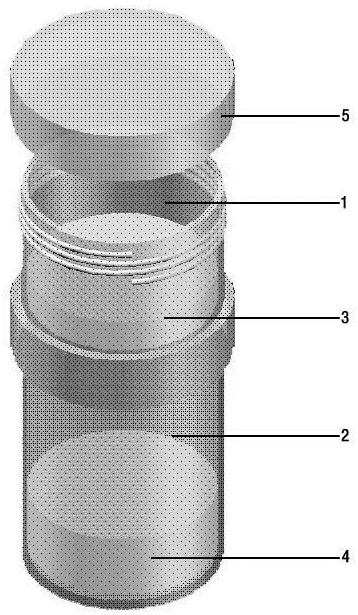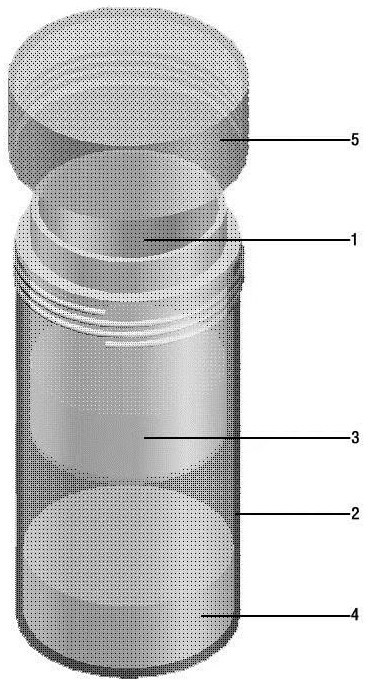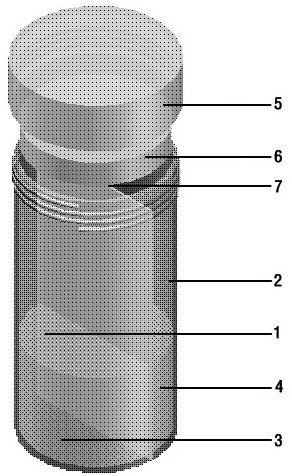Cell preservation method
A preservation method and cell technology, applied in the field of cell biology, can solve the problems of inability to remove, diagnose cell damage, and not remove red blood cells, and achieve excellent immunohistochemical and molecular pathological test results, complete morphological structure of cells, and huge size. The effect of socioeconomic benefits
- Summary
- Abstract
- Description
- Claims
- Application Information
AI Technical Summary
Problems solved by technology
Method used
Image
Examples
Embodiment approach , specific Embodiment approach 1
[0024] Such as Figure 4 The flow chart for the implementation of the cell preservation method includes two specific embodiments, specific embodiment 1: Unscrew the bottle cap S1, wash the cells into the A liquid S2, let stand for 5 minutes S3, pour the A liquid cell suspension into S4 in liquid B, centrifuge S5, and make slices S6 Specific embodiment two: unscrew the bottle cap S1, take off the isolation pad S2, wash the cells into liquid A S3, let stand for 5 minutes S4, invert the cell culture bottle S5, centrifuge S6, production S7.
[0025] Specific embodiment one, the upper and lower structure preservation bottle embodiment.
[0026] (1) Unscrew the cap 5 of the cell preservation bottle.
[0027] (2) Inject the fine-needle aspiration cells into the cell preservation solution A solution 3, aspirate the preservation solution to wash the syringe, and then inject the washing solution into the A solution 3.
[0028] (3) Let it stand for about 5 minutes to lyse the red bloo...
specific Embodiment approach 2
[0031] Specific embodiment two, left and right structure preservation bottle embodiment.
[0032] (1) Unscrew the bottle cap 5 of the cell preservation bottle, and remove the sealing gasket 6.
[0033] (2) Inject the fine-needle aspiration cells into the cell preservation solution A solution 3, aspirate the preservation solution to wash the syringe, and then inject the washing solution into the A solution 3.
[0034] (3) Cover the bottle cap 5 and let it stand for about 5 minutes to lyse the red blood cells until the color of solution A 3 changes from bright red to dark red (the color of red blood cells after lysing).
[0035](4) Turn the cell preservation bottle upside down and mix several times, and mix the cell suspension after lysing red blood cells in chamber A 1 with liquid B 4 in chamber B 2 through the gap left by the airtight (isolation) pad 6, for diagnosis The cells were fixed, and the red blood cell fragments and hemoglobin were dispersed and dissolved in formalde...
PUM
 Login to View More
Login to View More Abstract
Description
Claims
Application Information
 Login to View More
Login to View More - R&D
- Intellectual Property
- Life Sciences
- Materials
- Tech Scout
- Unparalleled Data Quality
- Higher Quality Content
- 60% Fewer Hallucinations
Browse by: Latest US Patents, China's latest patents, Technical Efficacy Thesaurus, Application Domain, Technology Topic, Popular Technical Reports.
© 2025 PatSnap. All rights reserved.Legal|Privacy policy|Modern Slavery Act Transparency Statement|Sitemap|About US| Contact US: help@patsnap.com



